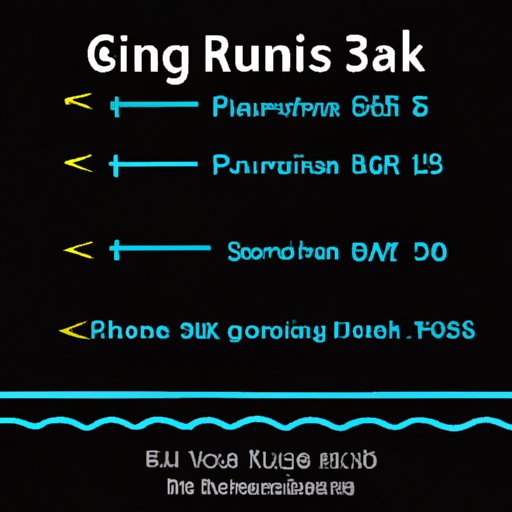Introduction
For those who are new to running or setting their sights on completing their first race, understanding the distance of a 5K can be confusing. Most people are familiar with miles as a unit of distance, but 5K is measured in kilometers. In this article, we’ll break down what a 5K is, how to train for it, and why it’s a popular distance for new and experienced runners alike.
Answering the Simple Question: How Many Miles are in a 5K?
First things first, let’s tackle the basic question of how many miles are in a 5K. A 5K is a race or running distance that is equivalent to 3.1 miles. While it’s measured in kilometers (hence the “K” in 5K), the distance can easily be converted to miles for those who typically think in miles.
From Couch to 5K: Understanding the Distance Runners Love to Hate
5K races have become incredibly popular, and for good reason. They’re a manageable distance for new runners to work towards, but they’re also challenging enough for experienced runners to push themselves. The distance can be run relatively quickly, making it an efficient way to get in a good workout and challenge yourself both physically and mentally.
Despite the appeal of 5Ks, many runners have a love-hate relationship with the distance. 5Ks require speed and endurance, which can be difficult to balance. Additionally, the distance is short enough that it’s easy to go out too fast and burn out before the finish line. But with proper training and pacing, anyone can successfully run a 5K.
Getting Started: How to Train for Your First 5K
If you’re new to running, training for a 5K can seem overwhelming. But the key to success is to start slow and gradually build up your endurance. If you’re already running regularly, you may be able to jump right into a beginner training program. However, if you’re new to running or have a lot of weight to lose, you may need to start with a walking program.
A good beginner training program will gradually increase your running distance and incorporate rest days to prevent injury. Start with a mix of walking and running, gradually increasing the amount of running you do until you can run for 30 minutes straight. Once you can do that, you’re ready to start a more advanced training program to work towards your 5K goal.
Breaking it Down: How to Pace Yourself for a 5K Race
Pacing is key to successfully running a 5K. Going out too fast can lead to burnout and a slower finish time. On the other hand, starting too slow can leave you with too much energy at the end of the race. The key is to find your pace and stick with it throughout the race.
One way to determine your pace is to use a GPS watch or running app to track your speed during training runs. Another strategy is to run your first 5K as a “fun run” to get a sense of how you feel running the distance. From there, you can adjust your pace and training accordingly.
Behind the Numbers: The Science of Running a 5K
As you’re training for your 5K, it can be helpful to understand what’s happening in your body as you run. During a 5K, your body goes through a variety of changes to meet the demands of running. Your heart rate increases, your breathing becomes faster and more shallow, and your body starts to burn glycogen for energy.
Understanding how your body responds to exercise can help you train more effectively and improve your race time. Plus, it’s always interesting to learn more about the science behind the sport you’re pursuing.
The Ultimate 5K Playlist: Music to Help You Reach Your Goal
Music can be a powerful motivator during runs and races. The right tunes can help you push through a tough workout and give you the energy to power up a hill or sprint to the finish. When it comes to creating the ultimate 5K playlist, it’s all about finding music that speaks to you and gets you moving.
Consider choosing songs with a fast tempo and a strong beat to help keep you on pace. You can also mix in some songs with catchy lyrics or a motivational message to help keep you focused and on track.
From 5K to 10K: What to Do Once You’ve Crushed Your First Race
Once you’ve successfully completed your first 5K, you may be looking for your next challenge. Many runners choose to move up to longer distances, such as 10Ks or half marathons. If that’s your goal, it’s important to gradually increase your mileage and continue to work on your endurance and pacing.
But running longer distances isn’t the only way to challenge yourself as a runner. You can also work on improving your 5K time or try your hand at trail running or obstacle course racing.
Conclusion
Whether you’re a seasoned runner or new to the sport, a 5K is a challenging and rewarding distance to work towards. By understanding how to train, pace yourself, and fuel your body, you can successfully conquer the 3.1 mile distance. And once you’ve achieved that goal, the sky’s the limit for what you can accomplish as a runner.
